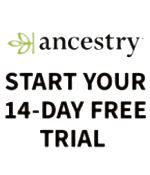Buckingham, Buckinghamshire
Up to 1834
In 1725, the early workhouse directory, An Account of Several Workhouses..., notes the existence of a workhouse at Buckingham.
A parliamentary report of 1777 recorded a parish workhouse in operation at Buckingham for up to 40 inmates.
Eden, in his 1797 survey of the poor in England, reported of Buckingham that:
After 1834
Buckingham Poor Law Union was officially formed on 13th July 1835. Its operation was overseen by an elected Board of Guardians, 32 in number, representing its 30 constituent parishes as listed below (figures in brackets indicate numbers of Guardians if more than one):
Buckinghamshire:
Addington, Adstock, Akeley, Barton Hartshorn, Beachampton, Buckingham (3), Charndon, Chetwode, Edgcote, Foxcott, Hillersden, Leckhampstead, Lillingstone Dayrell, Maids Moreton, Marsh Gibbon, Middle Claydon, Padbury, Poundon, Preston Bissett, Ratclive-cum-Chackmore, Shalstone, Steeple Claydon, Stowe, Thornborough, Thornton, Tingewick, Twyford, Water Stratford.
Later Addition: Luffield Abbey (from 1858).
Oxfordshire: Boycott, Lillingstone Lovell.
The population falling within the union at the 1831 census had been 13,129 with parishes ranging in size from Thornton (population 44) to Buckingham itself (3,465). The average annual poor-rate expenditure for the period 1832-35 had been £13,705 or £1.0s.10d. per head.
The Buckingham Union workhouse was built in 1838 on the north side of Stratford Road (just to the west of where Addington Road now runs). The Poor Law Commissioners authorized an expenditure of £5,550 for the building which was to accommodate 250 people. The architect was George Gilbert Scott whose design wasvariation on the popular cruciform or "square" plan. The entrance range contained a three-storey section at the centre, flanked by single-storey wings at each side. To the rear, male and female accommodation was placed either side of the octagonal central hub, whose windows provided a view to each area of the inmates' yards.
A fever hospital was later erected to the south of the workhouse and casual wards for vagrants to the north. The workhouse layout can be seen on the 1879 map below.

Buckingham workhouse site, c.1879.
By the early 1900s, an extension — perhaps a new board room — had been added to the south-western frontage of the building.
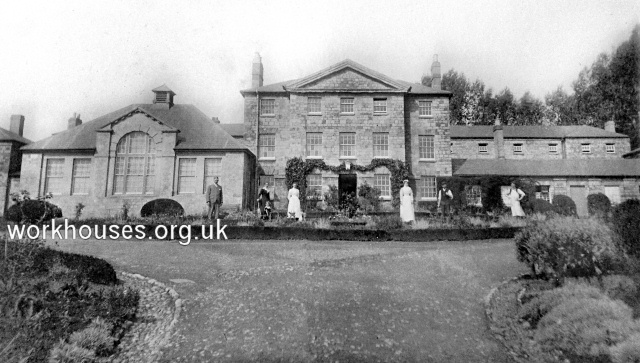
Staff in front of Buckingham workhouse, early 1900s.
© Sarah Newton.
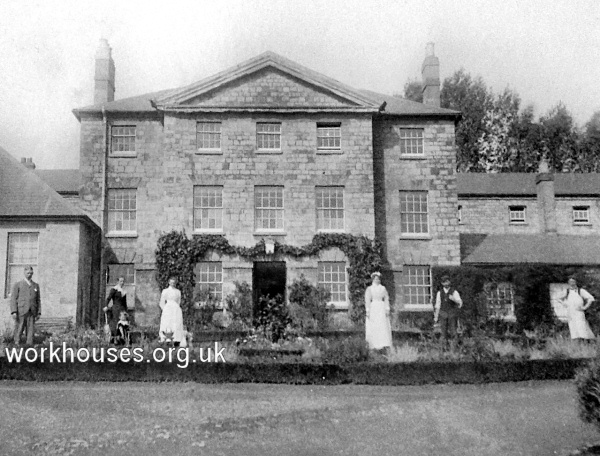
Staff in front of Buckingham workhouse (detail), early 1900s.
© Sarah Newton.
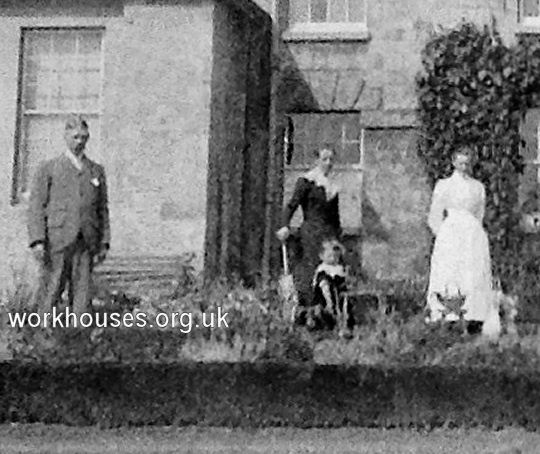
Staff in front of Buckingham workhouse (detail), early 1900s.
© Sarah Newton.
By the early 1900s, the workhouse was occasionally sending cases for medical care at the nearby nursing home.
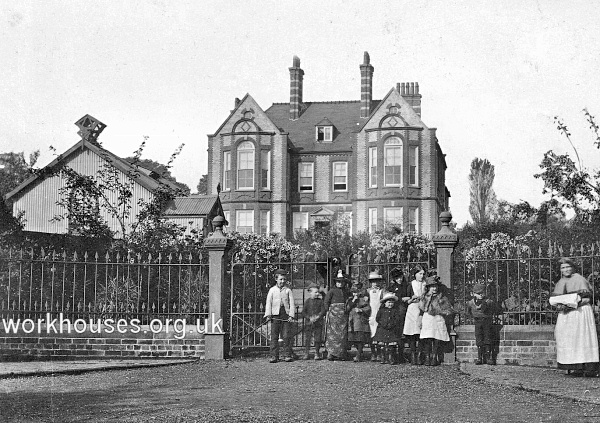
Buckingham nursing home, early 1900s.
© Sarah Newton.
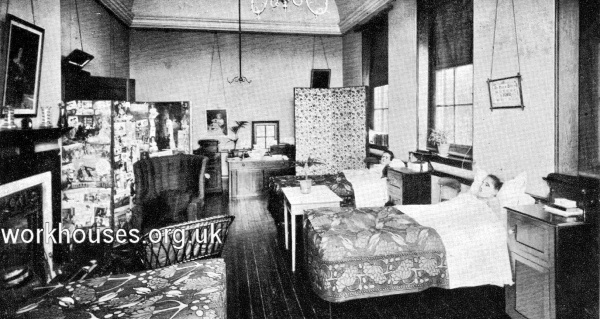
Buckingham nursing home women's ward, early 1900s.
© Sarah Newton.
From 1904, children born in workhouses no longer had any indication of this on their birth certificate. Instead, the place of birth was recorded as an anonymous street address. In the case of Buckingham, the address used for this purpose was19 Stratford Road, Buckingham. From around 1918, the practice was also extended to death certificates.
After 1930, the former workhouse was redesignated as a County Home Public Assistance Institution. During the Second World War, the building was used to house refugees. In 1949, part of the building was converted for use as a branch of the Bucks County library. By the 1970s, the workhouse buildings had all been demolished and a fire and ambulance station occupied the site. These have now been replaced by modern housing.
Staff
Inmates
Records
Note: many repositories impose a closure period of up to 100 years for records identifying individuals. Before travelling a long distance, always check that the records you want to consult will be available.
- Centre for Buckinghamshire Studies, County Hall, Walton Street, Aylesbury, Bucks HP20 1UU. Amongst the relatively few surviving records are: Guardians' minute books (1897-1929 with gaps); Committee minutes (1895-1920); etc.
Bibliography
- None.
Links
- None.
Acknowledgment
- Thanks to Sarah Newton for the photos.
Unless otherwise indicated, this page () is copyright Peter Higginbotham. Contents may not be reproduced without permission.
